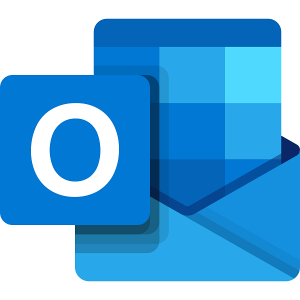 If you're a Microsoft Outlook user, and chances are you are, there are some features that can make you a lot more effective that you really should be using. Let me take a moment to introduce you to them:
If you're a Microsoft Outlook user, and chances are you are, there are some features that can make you a lot more effective that you really should be using. Let me take a moment to introduce you to them:
1. Follow-up Flags. These days we get a lot of our action items via email. Somebody sends you a message asking for a report, or a call or some other task. Too many people just leave those messages in their Inbox as sort of an ad-hoc To-Do list but that doesn't help you prioritize or sort those action items very effectively. The messages aren't usually received in the order that the action items are due. All recent versions of Outlook have a tool called the "Follow-up Flag" which you can set to better organize those items.
The follow-up flag appears as a grey flag on the right side of the message list and if you right-click it you'll get a set of options for when you'd like to flag this message for follow-up.
- Today & Tomorrow are pretty self-explanatory
- This Week & Next Week will put the item on the last day of your defined work week - which is Friday for the vast majority.
- No Date - flags it but doesn't assign a date. Don't use it - all of your "No Date" items will sort to the top of the To Do list and push your "Today" items (which are clearly more important) off the bottom of the screen.
- Custom - lets you specify a custom date, like next Tuesday or November 4th.
When you flag an item for follow-up it will appear on your To-Do Bar, nicely organized in the order you've specified. When you complete the item just give the flag a single left click and it will be marked as done.
BONUS: If you move a flagged item to a sub-folder in Outlook, the item stays on the To-Do Bar. Now you can file away your action items and not have to worry about forgetting them. Helps you keep your Inbox cleaner.
2. Conditional Formatting - If you get a lot of email you may wish there was an easier way to tell what was important from what wasn't. Well, Outlook can help you out a bit there but you have to tell it how. With Conditional Formatting Outlook can use different fonts/colors to differentiate messages from different senders, with specific keywords or other similar criteria.
To use conditional formatting click the View tab on the ribbon, click View Settings > Conditional Formatting. Here you'll be able to create any rules you want. First click "Add" , give it a name ( ex: "Messages from Joe") and then click the Font button to specify the font you want to use for these messages. Maybe make the text slightly bigger and color it Green.
The next step is the most important, click the Condition button to set the criteria messages will need to match for this formatting to apply. In this example click "From" and enter Joe's email address. Click OK three times and you'll be returned to your Inbox where"¦any messages from Joe will now be slightly larger and green.
You can use this trick to display messages from your spouse, boss, key customers"¦in different fonts for easy identification. You're not limited to just specifying from though - you can do the same thing having Outlook check for specific key words in the subject or body of messages.
Conditional Formatting helps you make sense of the madness
3. Non-Contiguous Days on the Calendar. I often need to look at multiple days on my calendar and sometimes those days aren't contiguous. So how can I see them without having to look at the entire month? Hold down the CTRL key on your keyboard and click each of the days you want on the date navigator (the little calendar at the top left). Outlook will show you each of the days you select side-by-side-by-side"¦
BONUS: You can drag and drop appointments between those days to easily reschedule things.
Outlook is a powerful tool. Are you getting the most out of it?
Need more help with Outlook? Feel free to reach out on Twitter, Facebook, Google+, via email or give me a call at 888-507-9921 extension 101.




